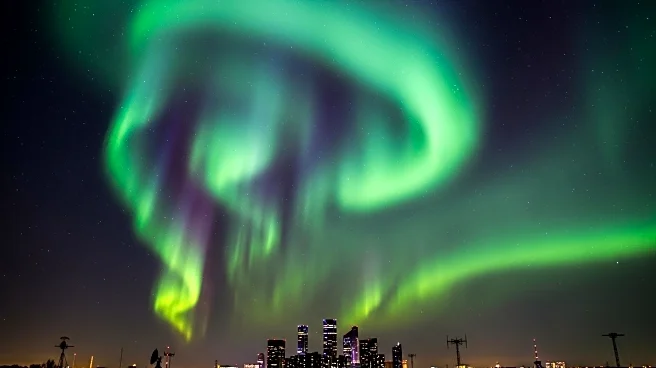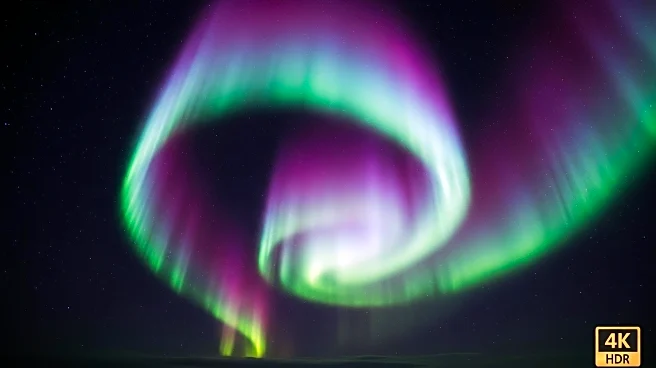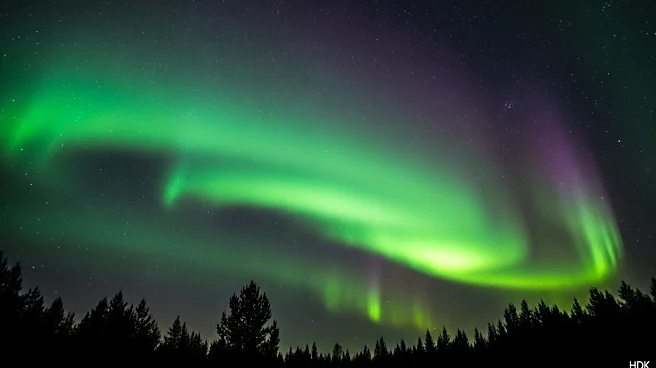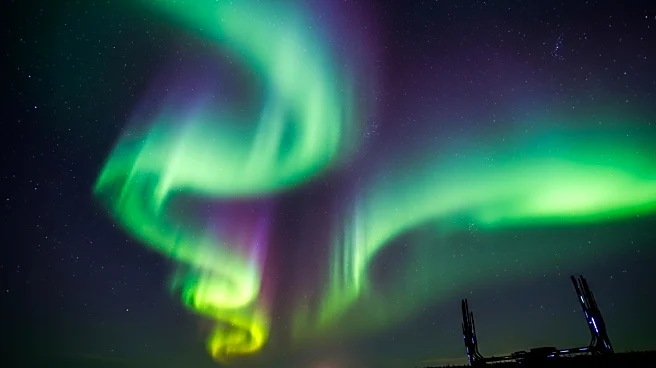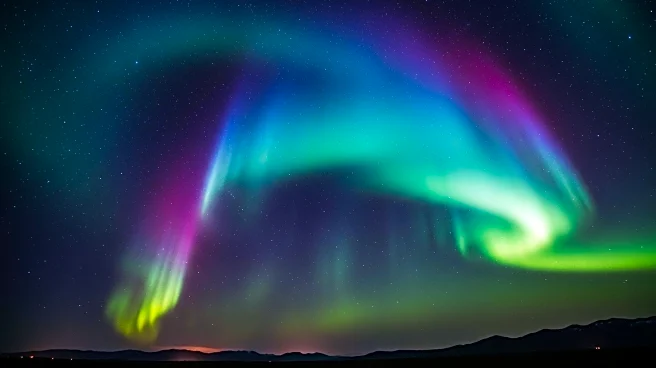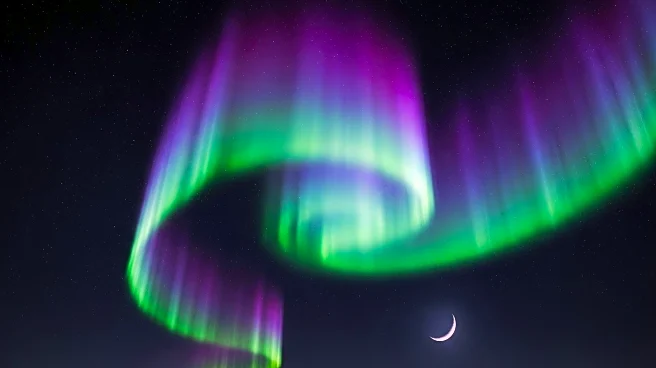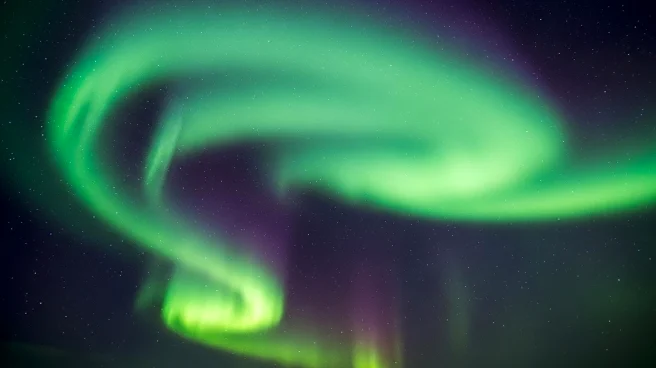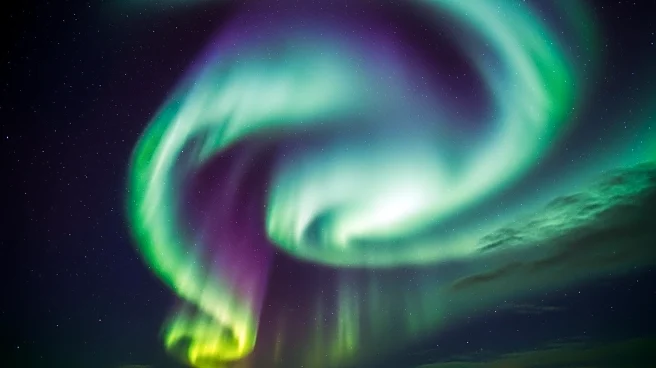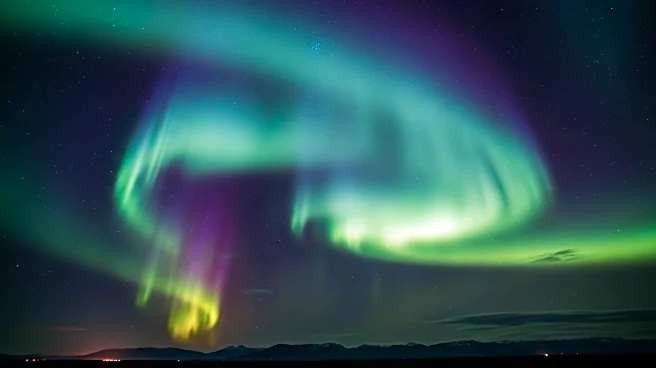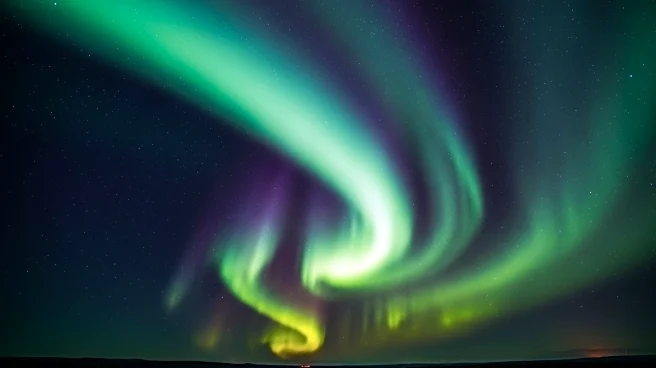What's Happening?
In the coming years, the northern lights, or auroras, are anticipated to become more vivid as the Sun enters a particularly active phase of its solar cycle. According to reports, scientists expect stronger geomagnetic storms and more frequent auroral displays, even as the Sun moves past its peak activity period. This phenomenon is linked to the solar cycle, which spans approximately 11 years and includes a solar maximum characterized by increased sunspots and solar eruptions. Despite the Sun transitioning into a solar minimum, the presence of long-lived coronal holes on the Sun's surface will continue to emit high-speed solar winds, triggering geomagnetic storms and resulting in striking auroral displays. These storms, while less intense than those during the solar maximum, are expected to be more frequent, providing extended opportunities for aurora enthusiasts.
Why It's Important?
The anticipated increase in auroral activity is significant not only for its visual spectacle but also for its potential impact on technological systems. Geomagnetic storms, which are expected to become more frequent, can disrupt communication networks, navigation systems, and spacecraft operations. This poses risks to satellite functionality, GPS accuracy, and radio communications, potentially affecting industries reliant on these technologies. The heightened solar activity, while offering breathtaking auroral displays, presents challenges for maintaining the integrity of technological infrastructure. As such, stakeholders in the technology and aerospace sectors may need to prepare for potential disruptions and consider strategies to mitigate the impact of these geomagnetic events.
What's Next?
As the solar cycle continues to decline, experts predict that geomagnetic storms will remain frequent, driven by the interaction of ongoing solar eruptions and coronal hole formations. This period, often referred to as the Sun's 'last gasp,' could see significant solar activity develop in the next one to three years. Stakeholders, including technology companies and space agencies, may need to monitor solar activity closely and implement measures to safeguard against potential disruptions. Additionally, aurora enthusiasts can look forward to extended opportunities to witness the northern lights, particularly in higher latitudes, as these geomagnetic storms unfold.

